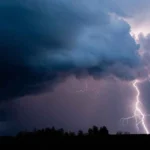
Gorongosa National Park is a 4,000-square-kilometer park in Africa’s Mozambique. The Mozambique Company set aside 1000 square kilometers as a hunting reserve for its company members and guests in 1920. To protect the black rhino and nyala, the reserve was expanded to 3,200 square kilometers in 1935. (type of antelope). The reserve was eventually handed over to the colonial government, and the national park was established in 1960. A total of 2,100 square kilometers were added. To give farmers more land, the park was reduced to 3,770 square kilometers in 1966. Armed conflicts in the region significantly reduced wildlife populations, but rehabilitation efforts to restore populations have been ongoing since the 1990s.
By 1992, the number of animals in Gorongosa National Park had fallen by 95%. Only a few wildebeests, 300 elephants, 6 lions, 5 zebras, and 15 buffalo were present.
In 1994, the European Union and the International Union for the Conservation of Nature helped the African Development Bank launch a project to rebuild the park’s infrastructure and restore its wildlife.
Over the next few years, Gorongosa National Park reopened 100 kilometers of roads and trails. Guards were trained to assist in the capture of poachers who were illegally hunting in the park.
The Carr Foundation and the Government of Mozambique established a 60 square kilometer sanctuary in Gorongosa National Park between 2004 and 2007, allowing wildebeests and buffalo to be reintroduced into the park’s wildlife population.
The government of Mozambique established a 3,300 square kilometer buffer zone around the park in 2012.
The Mozambique government and the Carr Foundation collaborate to restore and protect Gorongosa National Park. The Carr Foundation is a charitable organization based in the United States.
Gorongosa National Park is classified as savanna, which means the landscape is mostly grassland.
Gorongosa National Park is made up of 14% forest.
For the majority of the year, a portion of the park’s grassland (estimated at 20%) is flooded.
Gorongosa National Park is now regarded as one of Africa’s top wildlife destinations.
Lions, elephants, crocodiles, hippos, and antelopes are among the animals found in Gorongosa National Park.
Because of the diversity of species, bird watching is very popular in Gorongosa National Park. November is the best month to go bird watching because birds are migrating to breed.
The Gorongosa National Park is home to a bird found nowhere else on the planet: the green-headed oriole.
Every day of the year, at least 150 different bird species can be seen in Gorongosa National Park, including the olive thrush, bearded woodpecker, red-chested cuckoo, Egyptian goose, little stint, African fish eagle, weaver, grey crowned crane, lilac-breasted roller, and woodland kingfisher.
Crawshay’s zebra, Mount Gorongosa pygmy chameleon, and Swynnerton’s worm lizard are among the unusual animals found at Gorongosa National Park.
Every year, approximately 6,000 people visit Gorongosa National Park.








